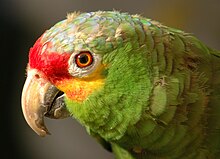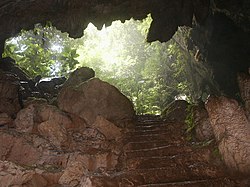Travel to Belize by Travel Deal.Expert

 Tourism in Belize has grown considerably recently, and it is now the second largest industry in the nation. Belizean Prime Minister Dean Barrow has stated his intention to use tourism to combat poverty throughout the country.The growth in tourism has positively affected the agricultural, commercial, and finance industries, as well as the construction industry. The results for Belize's tourism-driven economy have been significant, with the nation welcoming almost one million tourists in a calendar year for the first time in its history in 2012.
Tourism in Belize has grown considerably recently, and it is now the second largest industry in the nation. Belizean Prime Minister Dean Barrow has stated his intention to use tourism to combat poverty throughout the country.The growth in tourism has positively affected the agricultural, commercial, and finance industries, as well as the construction industry. The results for Belize's tourism-driven economy have been significant, with the nation welcoming almost one million tourists in a calendar year for the first time in its history in 2012.History
Prior to its independence in 1981, Belize was not regarded as a place to travel due to lack of infrastructure to cater to large-scale tourism. However, rapid expansion of the tourist industry over the last decade has made it the nation's second largest industry.
Tourism: Belize has large array of diverse tourists, adventure tourists and eco-tourist attractions. The Belize Barrier Reef (second largest in the world), over 450 offshore Cayes (islands), excellent fishing, safe waters for windsurfing, swimming, cave rafting, boating, paddleboarding, scuba diving, and snorkelling, numerous rivers for rafting, and kayaking, various jungle and wildlife reserves of fauna and flora, for hiking, bird watching, and helicopter touring, as well as many Maya ruins—support the thriving tourism and ecotourism industry. Of the hundreds of cave systems, Belize also holds the largest cave system in Central America, 544 species of birds, and well-preserved natural beauty. Despite all this, it is still among the least visited country in the region.
Development costs are high, but the Government of Belize has designated tourism as its second development priority after agriculture. In 2012, tourist arrivals totalled 917,869 (with about 584,683 from the U.S.) and tourist receipts amounted to over $1.3 billion.
Rural and community-based tourism
Many privately run companies have cooperatives in Southern Belize that manage a rural and
community-based tourism project, which has been developed with support from the UNESCO. Tourism allows otherwise marginalized minorities such as the Maya and the Garifuna people to receive new opportunities in alternative markets, harvest crops, preserve and involve foreigners in their culture and diversify their income. Many companies offer visitors the opportunity to visit a cacao, cashew farm, learn about Maya, Kriol or Garifuna craftsmanship, and even to stay overnight on a Maya, Kriol or Garifuna village and explore with a community guide.Ecological tourism
Eco-tourism aims to be ecologically and socially conscious, it focuses on local culture, wilderness, and adventure. Belize's eco-tourism is growing with every passing year, it boasts a number of eco-tourist tours and energy efficient hotels, with environmentally-conscious and renewable resources. Popular eco-tourism destinations in Belize include the Cockscomb Basin Wildlife Sanctuary,Mountain Pine Ridge Forest Reserve, Swallow Caye Wildlife Sanctuary, and the Community Baboon Sanctuary.
Archaeological reserves
Further information: Maya ruins of Belize
Before the arrival of Europeans in America, Belize lay in the heartland of the Maya civilisation, and consequently contains some of the earliest and most important Maya ruins. Archaeological findings at Caracol, in the southern end of the country, have suggested that it formed the centre of political struggles in the southern Maya lowlands. The complex covered an area much larger than present-day Belize City and supported more than twice the modern city's population. Meanwhile, Lamanai, in the north, is known for being the longest continually-occupied site in Mesoamerica, settled during the early Preclassic era and continuously occupied up to and during the area's colonisation.
While the majority of reserves under this category are related to the pre-colonial era, Serpon Sugar Mill and Yarborough Cemetery, both designated in 2009, only date from the 19th century and are alternatively described as historical reserves.
The country's 15 archaeological sites are managed by the Institute of Archaeology, a branch of the National Institute of Culture and History (NICH), which comes under the authority of the Ministry of Tourism, Civil Aviation and Culture. This type of protected area was gazetted under the Ancient Monuments and Antiquities Act, 1 May 1972. All of the following reserves are open to the public. Many other sites, such as Cuello and Uxbenka, are located on private land and can only be visited if prior permission is obtained from the landowner.[
Main natural attractions
Roughly 26% of Belizean land and sea is preserved within a total of 95 reserves, which vary in their purpose and level of protection. This network of protected areas exists under a variety of management structures
National parks
In Belize, national parks are areas designed for the protection and preservation of natural and aesthetic features of national significance for the benefit and enjoyment of the people. Therefore, they are areas of recreation and tourism, as well as environmental protection. National parks are gazetted under the National Parks System Act of 1981. They are administered by the Forest Department and managed through partnership agreements with community-based non-governmental organisations.
source: https://en.wikipedia.org/wiki/Tourism_in_Belize
FOLLOW US on FACEBOOK : https://www.facebook.com/World-Destinations-1751422171851407/








No comments:
Post a Comment